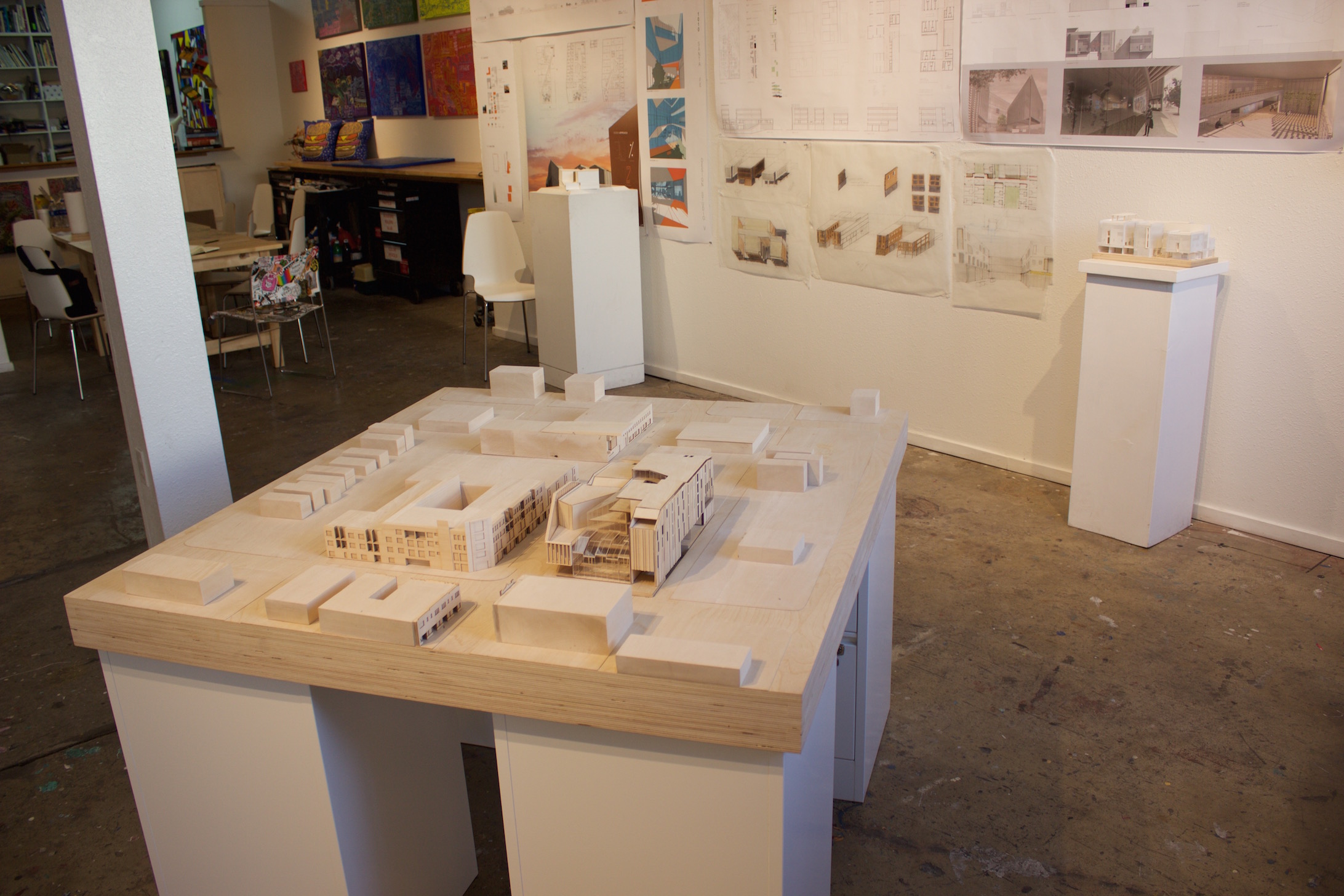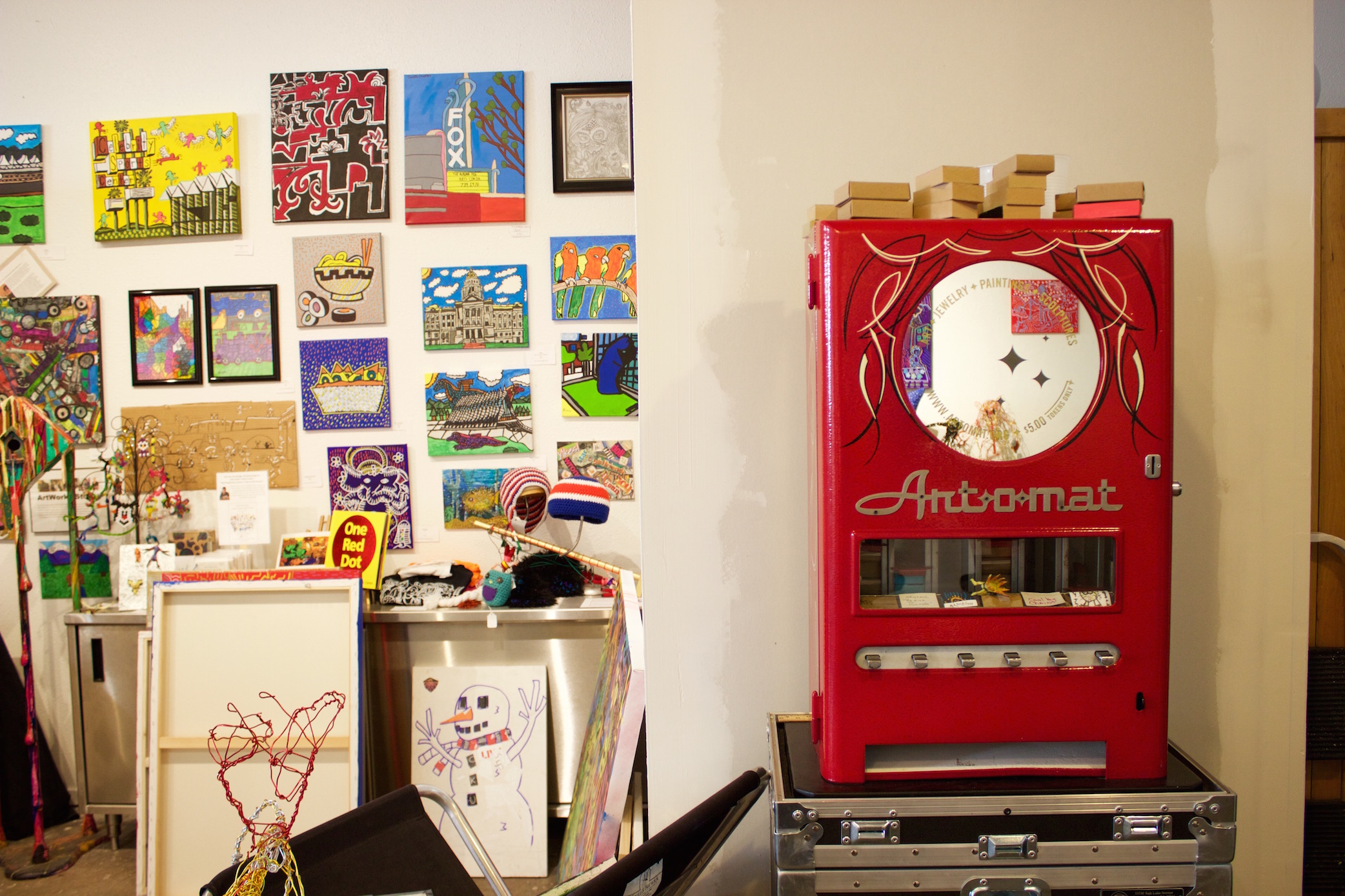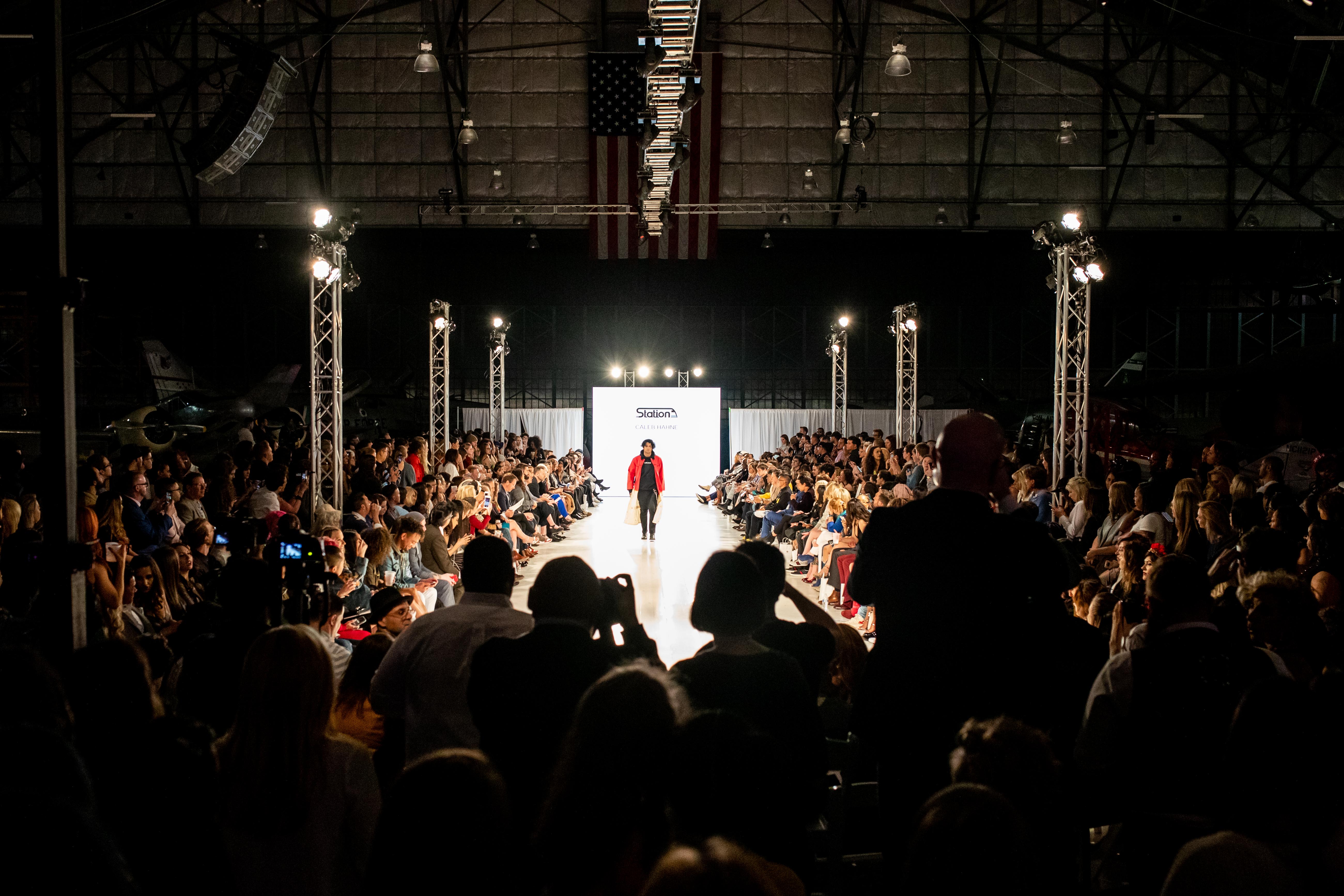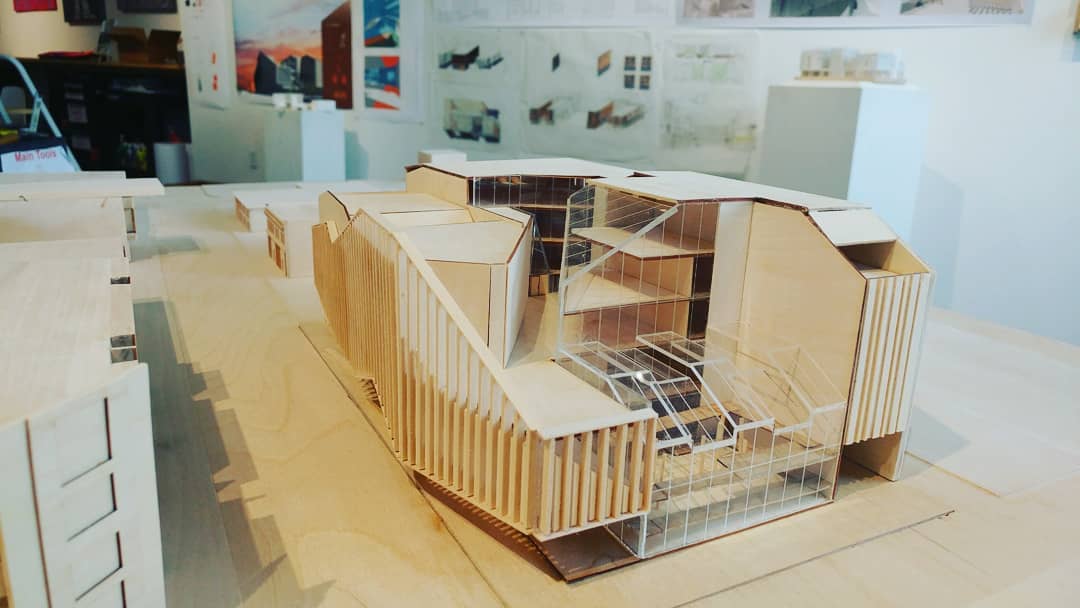Within the artistic community, the conversation on everyone’s mind is being able to live and work as an artist without being a ‘starving’ one. Live-work spaces are fundamental to the healthy functioning of a creative culture and Denver has been lacking in that department, even though the art and culture scene is blossoming in other ways. But, imagine adding the dimension of disability to an artist’s life and the availability of a shared and supported space to create, live and work is even more essential to sustaining their careers. That’s the task the founder of Access Gallery in the Art District on Santa Fe Damon McLeese gave to Architecture graduate students at the University of Colorado Denver for a show titled Art of Architecture.
On view the first few weeks of January, Art of Architecture displayed blueprints and miniature models from 16 architecture students who were given the opportunity to meet the artists with disabilities who work at Access Gallery and ask for their opinions, needs and wants. At first, McLeese wanted the 1,500 square feet Access Gallery to be re-imagined but was prompted to think bigger and ask for more. “In a perfect world I’d like for the artists who we help to live on their own as independently as they’re able to and come downstairs to work, have their source of income right in front of them,” McLeese explained.

Access Gallery (formerly VSA Colorado) is a nonprofit organization that aims to provide economic opportunity to artists with disabilities by selling their artwork in the gallery space at 909 Santa Fe Drive and providing them with education, support, access and room to be creative. With the help of other artists in Denver, the people who are served by Access Gallery are able to market their work and are given a platform to express themselves that would otherwise be unavailable to them. “It’s great to teach someone about Picasso,” McLeese admitted. “But it won’t do them any good if they can’t afford the bus fare to get here. That’s why we focus on the economic aspect of showing their work. And we are always looking for ways to make art more accessible to everyone.”

The architecture students researched the neighborhood surrounding Access Gallery and were given an educational lecture by McLeese on disabilities, including a question McLeese poses to many people— how accessible is your current living situation to a person with limited mobility? With the restraints and possibilities in mind, the students came up with a range of designs that each contained a nugget of empathetic and intelligent problem-solving and could be used as a starting point for any live-work space in Denver, regardless of serving a group of people with disabilities or not.
“Over the past year, we began to think big, asking ourselves: what if we had an opportunity to rethink Access Gallery, to imagine a physical community built around our artists, a place they can create, sell, and actually live?” said McLeese. “Part of the magic of Access Gallery is the community we foster by creating a safe and welcoming environment. While our artists come from all over the city, many of them see us as their home away from home.”
There was one winner for the Art of Architecture show, Joel Miller, who was announced in a final reception on January 19, 2018. Denver Architectural Foundation facilitated the project and funded it with a grant from the Scientific and Cultural Facilities District (SCFD.) Unfortunately, due to many obstacles but primarily due to much greater funding restraints, the winning design is not scheduled to be built at this time. The point of the exhibition was to start a dialogue about the possibilities of having a shared space for artists with disabilities, even if that means Access Gallery partners with other organizations who represent and help the disabled population. In that way, the exhibition could not be more timely and appropriate for all artists and creatives in Denver, who must fight for their right to affordably live in the place they help to make desirable.






good!